Tazzelenghe is one of Italy’s rarest red grapes and its wines aren’t easy to find either (at least for the time being): but it is also one of the country’s most underrated wine grape varieties and its wines can be spectacular. I remember a fantastic (admittedly somewhat artisanally made) Tazzelenghe wine from the 1983 vintage I tried during one of my myriad wine forays in forgotten nooks of the Italian countryside at a farmer’s house a very long time ago. It was delicious: then and there, I fell in love with the grape and its wine. Tazzelenghe really does deserve to be better-known, and it’s not just because of halcyon memories of my adolescence and the eno-archeological quest for new grapes and wines that has always characterized, motivated, even, my life. To be clear, every time over the years I have held masterclasses and guided tastings on the wines of Friuli Venezia Giulia (FVG), and have asked those in attendance which wines in the tasting they had liked best, Tazzelenghe wines always come in second or at most third among the five to seven varieties represented in the tasting. Over the last ten-fifteen years, I have done this enough times to know that this cannot be a fluke. There is most definitely something to the variety and its wines. In other words, if people only had a chance to taste more of Tazzelenghe’s wines, the grape and its wines would quickly come back to the fore, inevitably leading to more estates planting the variety in their vineyards.
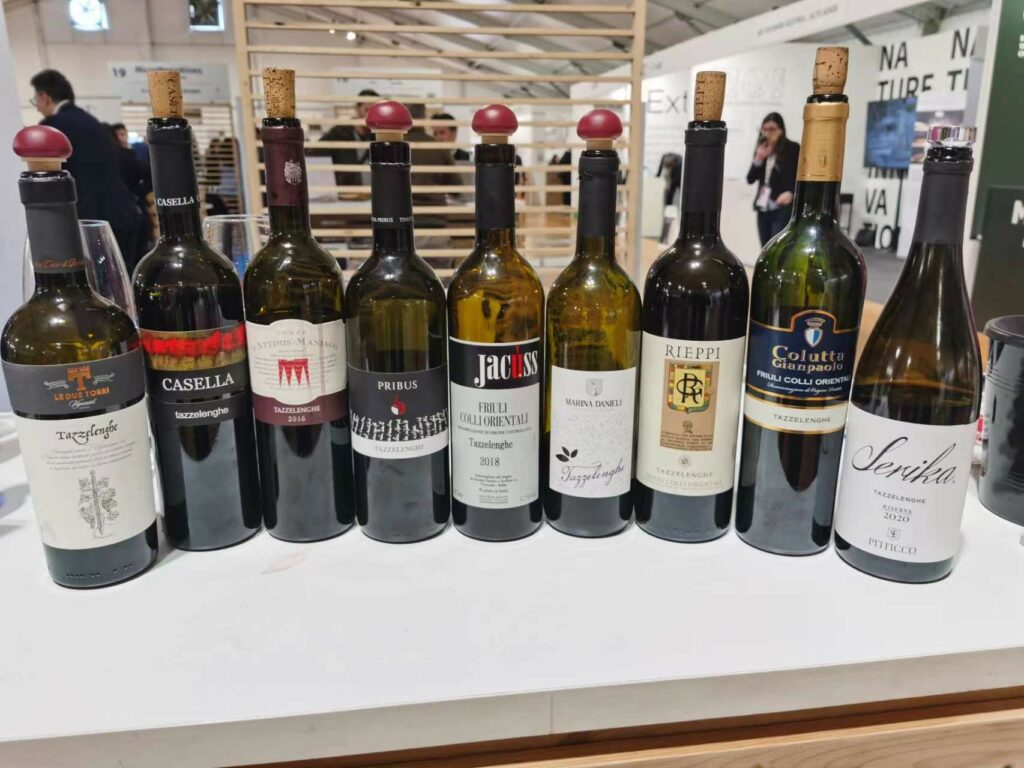
Tazzelenghe’s phoenix-like act
About eighteen years ago or so (I really don’t remember now exactly which year it was), I experienced yet another in a long line of defining moments in my life devoted to wine. While attending a conference on Friuli Venezia Giulia’s (FVG) native grapes and wines in Udine (that time span alone tells you how long I have been following and been interested in the subject of native grapes), one of the speakers had nothing better to say during his presentation than: “… I really don’t understand why in FVG they bother to grow some varieties, Tazzelenghe for example, I mean what’s the point, there’s only five or six hectares of it left…”. He really said that, and he actually mentioned Tazzelenghe by name. To be crystal-clear, that statement was so wrong on so many levels that I wouldn’t even know where to begin listing them all. Suffice it to say, what was said got me thinking that something needed to be done. And if you know me at all, then you just know I did.
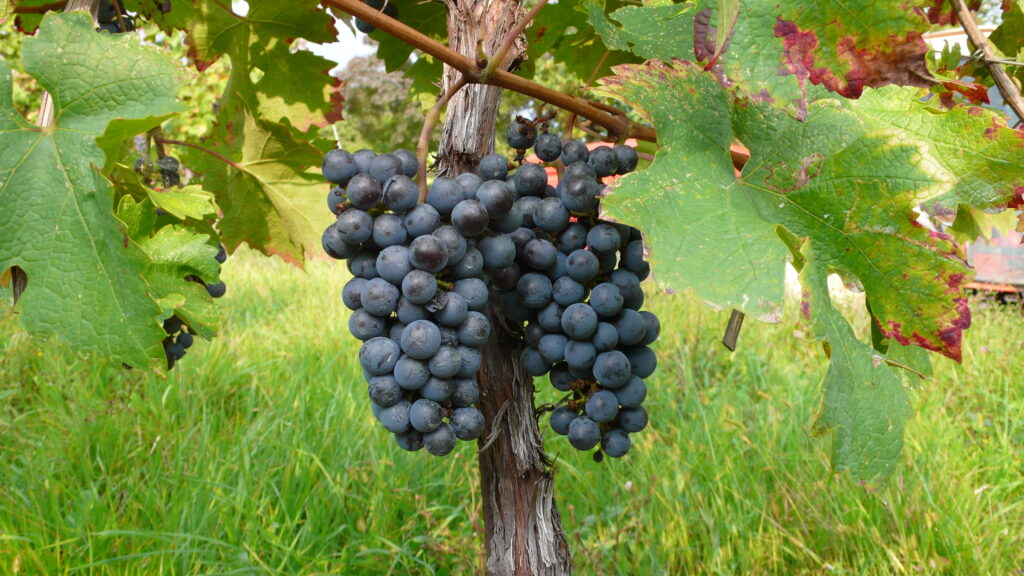
To be both charitable and brief, Tazzelenghe is one of FVG’s best native red grapes and to wish for its non-cultivation, and hence its disappearance, literally borders on the insane. The disappearance of any plant or animal species is a tragedy, and it always leaves us all poorer in the end. Once something is gone, it is gone, and at least for now, there’s no easy way of bringing those lost species back. For example, there’s only an estimated 300-500 snow leopards left in the wild (the range of that estimate changes upon the expert view you choose to believe). It is one of the world’s most beautiful animals, and while I don’t exactly wish to meet one on my next stroll up and down the Himalayas (not at a safe distance, that is), I also do think the thing should not be made to disappear or to only live forever banished behind zoo or park cages. In ultimate analysis, saving any one single vegetal or animal species helps our sorry planet’s biodiversity and so it behooves all of us to do something to help these life forms survive. And that includes our hero, Tazzelenghe.
Tazzelenghe is an ancient red grape variety of Italy’s northeastern FVG region and though it is not as well-known as some other Italian native grapes are currently, it too can give absolutely delicious and at times mesmerizing wines. In fact, until not so long ago, Tazzelenghe was an outlaw grape, just like Schioppettino and Pignolo were too; this is because the powers that be had forgotten to include the three among the allowed grape varieties one could plant in the region. (All three were inserted into the National Registry of Grape Varieties only in 1977; by contrast, Nebbiolo and Aglianico had been included already in 1970 and 1971, respectively.) Nowadays, the wines of Schioppettino, another high-quality native red grape of FVG, are all the rage. However, it too was all but forgotten as recently as the 1970s. Similarly, Pignolo was on nobody’s lips (literally, you might say) back in the 1970s, when it had been reduced to an afterthought. But today there are about thirty different quality wineries producing good wines with it, when none were doing so as recently as the 1970s. The poor gape was essentially growing in three rows only (and in an unspecified number of plants) at the Abbey of Rosazzo. In ultimate analysis, the plight of Tazzelenghe is no different than that of many other native wine grapes not just of FVG, but of Italy.
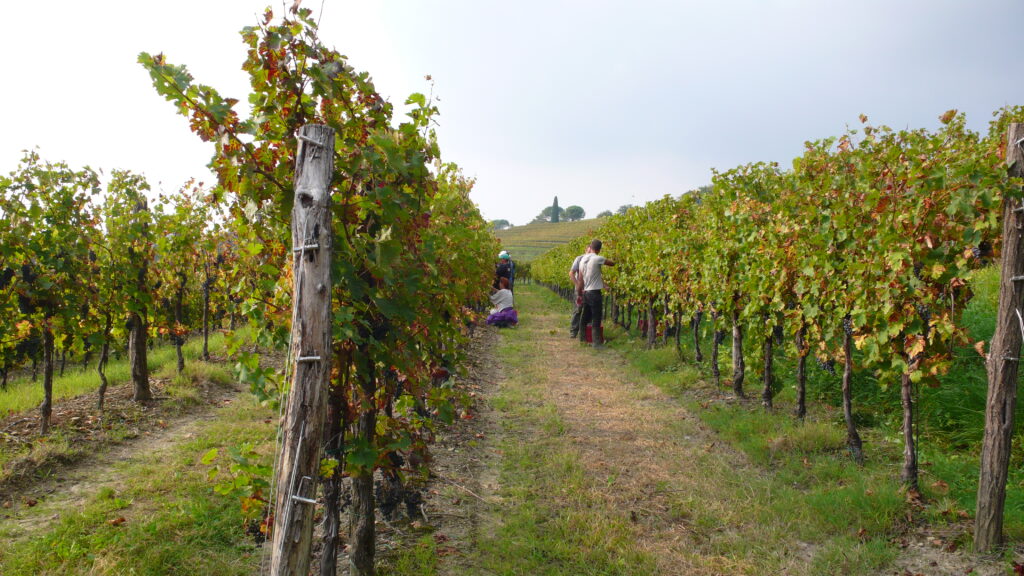
I hear you asking: if Tazzelenghe is so swell, why did it risk disappearing? The reasons for Tazzelenghe’s fall from grace are the usual hodge-podge of causes that have adversely affected other wine grapes at one point or another during their existence. In the specific case of Tazzelenghe, the major black marks against it were its inability to give big, fat, round, luscious, high alcohol, low pH, chocolaty wines that were all the rage back in the 1990s and 2000s (precisely those wines that nobody wants to drink anymore) and a recognized difficulty in reaching full physiologic ripeness every year (at least, things were so in the days of huge yields and before the advent of climate change). By the turn of the new century Tazzelenghe had been reduced to seven hectares or so in all of FVG (which meant in all of Italy too, given that the grape grew, and grows, only in that one Italian region) with very dim prospects of survival. The joke of course being that at the time people all over FVG were busy planting Cabernet Sauvignon and Merlot hoping to cash in on the international appeal of wines made with those two grapes, despite the fact that the two fare rather poorly in FVG’s rainy habitat. And they too fail to reach optimal physiologic ripeness in more years than not. It’s situation that would have made me, and make me, laugh: if it weren’t so absolutely and devastatingly mind-numbing, that is.
And so it was that, following the aforementioned conference, I proceeded to contact the last remaining producers of Tazzelenghe wine, of which there were about eight, to see if something could be done to not just save the grape but bring back its wine to the general attention of wine lovers. Forever to their credit, the producers were quick to seize on the validity of the idea, and even though they needed to devote their time and attention to their other grapes and wines that brought in income, they were also generally willing to engage in actions aimed at saving Tazzelenghe and bringing its wines to the fore. And so it was that the association of producers was born now known as the “Tazzelenghe Team”. A group of passionate and dedicated producers who wished to promote and foster Tazzelenghe and its wines with various activities. In this light, a memorable event was held in Rome at the residence of the American Ambassador in Rome, when I helped organize an evening featuring among other things an area of the villa’s gardens specifically devoted to Tazzelenghe and its wines (they had their own stand), with a delegation of the wine producers invited to the evening’s celebrations. It’s not every day that a grape variety obtains such visibility, and I for one am glad we were able to make it happen.
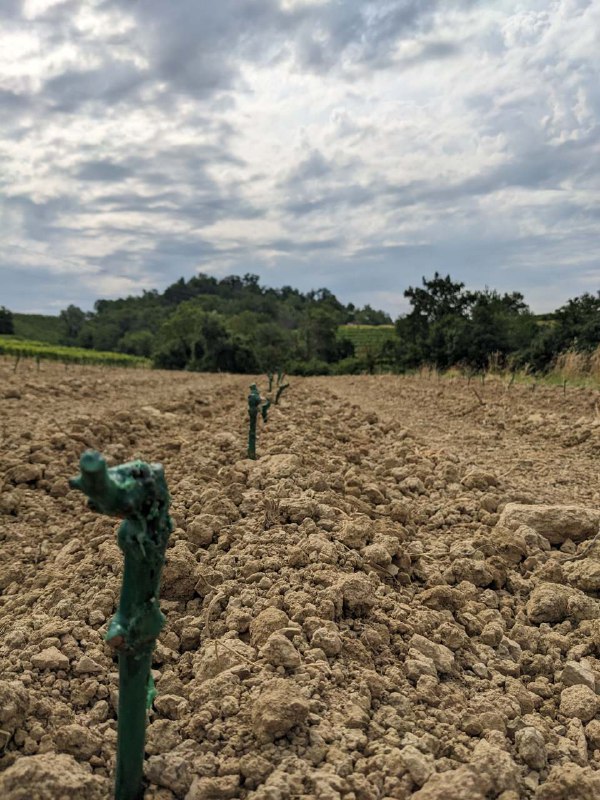
Today the numbers of hectares and of Tazzelenghe producing wineries is on the rise, if ever so slowly. Much of the credit must be given to Alberto D’Attimis Maniago, of the outstanding Conti D’Attimis Maniago estate in FVG who took it upon himself to push, prod and cajole his fellow colleagues to do something about the sorry state of affairs Tazzelenghe had fallen into. It is to his credit, and now his son Fabio, that the association has slowly gathered steam. At last count, there are at least nine producers making a monovariety Tazzelenghe wine, but more are now using it, and increasing its percentage, in blends. More importantly, there are timid signs of producers starting to plant Tazzelenghe again: the D’Attimis Maniago winery has just planted another 0.5 hectares to Tazzelenghe, and the also high-quality FVG producer, Marina Danieli, has now begun making a monovariety Tazzelenghe wine when she previously did not. Clearly, nobody’s (yet?) planting hectares of the stuff, but a few thousand square meters here today, another few thousand square meters there tomorrow, makes it so that the total Tazzelenghe hectarage is now creeping up above ten hectares. It is still a very small extension of vines, but hey, it’s a start. Even better, the wines are excellent and starting to gain attention. And in a sign of Tazzelenghe’s new-found success and popularity, a small booklet will be published soon that deal exclusively with this grape variety (the title of the booklet is appropriately enough, “Tazzelenghe”, published by Kellerman: look for it), its history and wines, something that would have been completely unthinkable just ten years ago. I was happy to write a preface for this book (something that I always refuse to do but was happy to do so for this noble cause) and am glad to see that others are taking up Tazzelenghe’s cause. All this wonderful to see and bodes well for Tazzelenghe’s future.
Like the famous phoenix of Greek mythology (but with analogs in other cultures too), the bird-like creature that cyclically regenerates, rising from its own ashes to live again over and over, Tazzelenghe has come back from oblivion and is here among us now. Welcome back, my old friend.
Tazzelenghe, the grape and wine
The word “tazzelenghe” derives from tàce-lenghe, which means “cut the tongue”, a not so veiled reference to the high acidity and sharp tannins the variety and its wines are endowed with. The grape’s existence was documented in the nineteenth century and it appears to have always lived in the areas around Buttrio, Manzano and Prepotto in what corresponds today to part of the Friuli Colli Orientali denomination. In the past it was grouped into the large group of Refosco grapes, of which the best-known member is Refosco del Peduncolo Rosso; Tazzelenghe was known as Refosco del Boton (or Botton). Subsequent studies have shown it is not a Refosco but rather a distinct variety and hence its “Tazzelenghe” name by which it is officially known by. What the variety looks like depends on the biotype, but in general Tazzelenghe has a truncated cone-shaped bunch and loosely-packed, medium-large, practically oval-shaped berries. The grapes have very high total acidity levels (“cuts the tongue”, remember?) up to as much as 6-7 g/L tartaric acid, but thanks to its thin but resistant skin it can be left to hang in the vineyards (that is if rain doesn’t intervene) such that the acidity eventually drops. Some producers choose to air-dry the grapes partly to further drop its acidity (and partly to avoid the risk of rain spoiling their party), but in my experience the best Tazzelenghe wines are those made with normally slightly late-harvested berries, though in FVG fickle fall weather, I recognize and understand that is easier said than done. Tazzelenghe’s wines are characterized by a very elegant frame, are medium-bodied, and endowed with red and blue/black fruit and herbal aromas and flavours lifted by violet perfume. The wines are much less peppery than Schioppettino’s, much less tannic than Pignolo’s, and are far more elegant and noble than those made with Refosco del Peduncolo Rosso. However, as many of today’s Tazzelenghe wines are made with varying percentage of air-dried grapes, just how elegant the wine turns out to be depends in large measure on just how large the percentage of air-dried grapes is. When the wine starts becoming thick, pasty, and less food-friendly than it typically is, well, that is a clearcut sign the percentage of air-dried grapes is more than it ought to be. But again, the reality of FVG’s weather is such that sometimes using a load of such grapes is unavoidable: that much admitted and accepted, “air-drying or bust” is not the right approach by which to make the best Tazzelenghe wines possible.
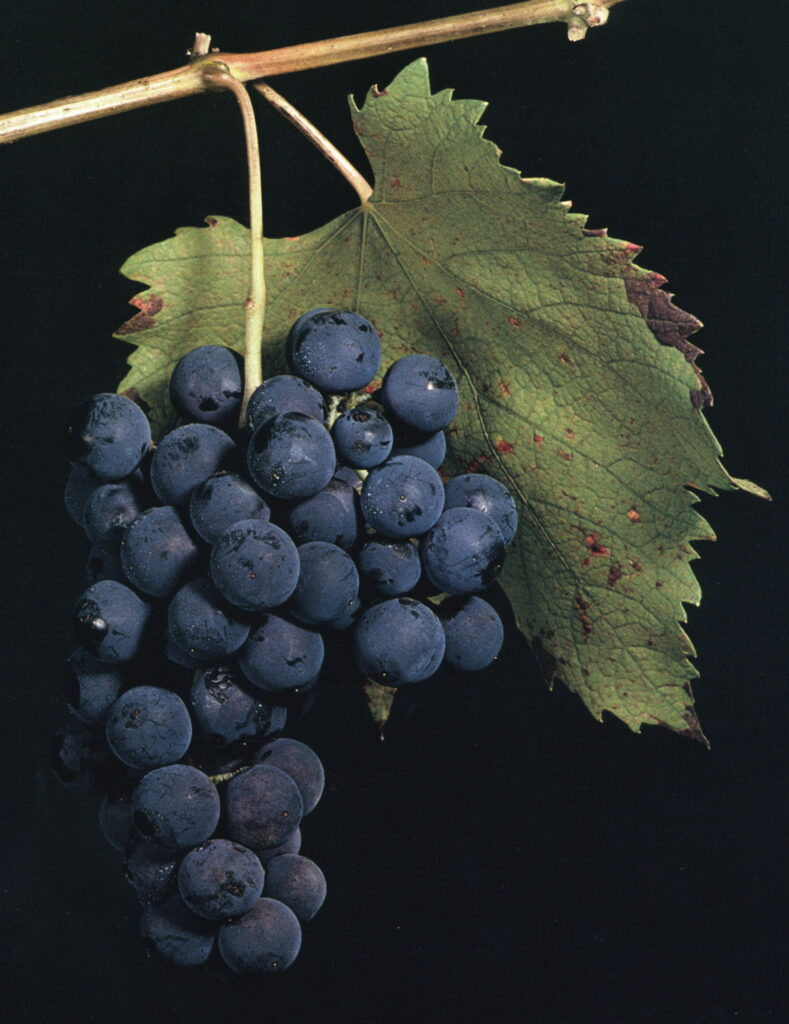
The wines in this tasting report
I tasted the following wines this year during the Vinitaly wine fair held in April in Verona, as the Tazzelenghe Team had a stand in the Micro Mega Wines thematic area of Pavillon F. This made it very easy to taste all the Tazzelenghe wines currently made in Italy (save one) in one fell swoop. The vintages of wines tasted ranged from 2013 to 2020. Recent vintages in FVG that have been good for red wines (and hence for Tazzelenghe too) include 2013, 2016, and 2019, while 2018 was characterized by weather patterns better suited to the production of good white wines.
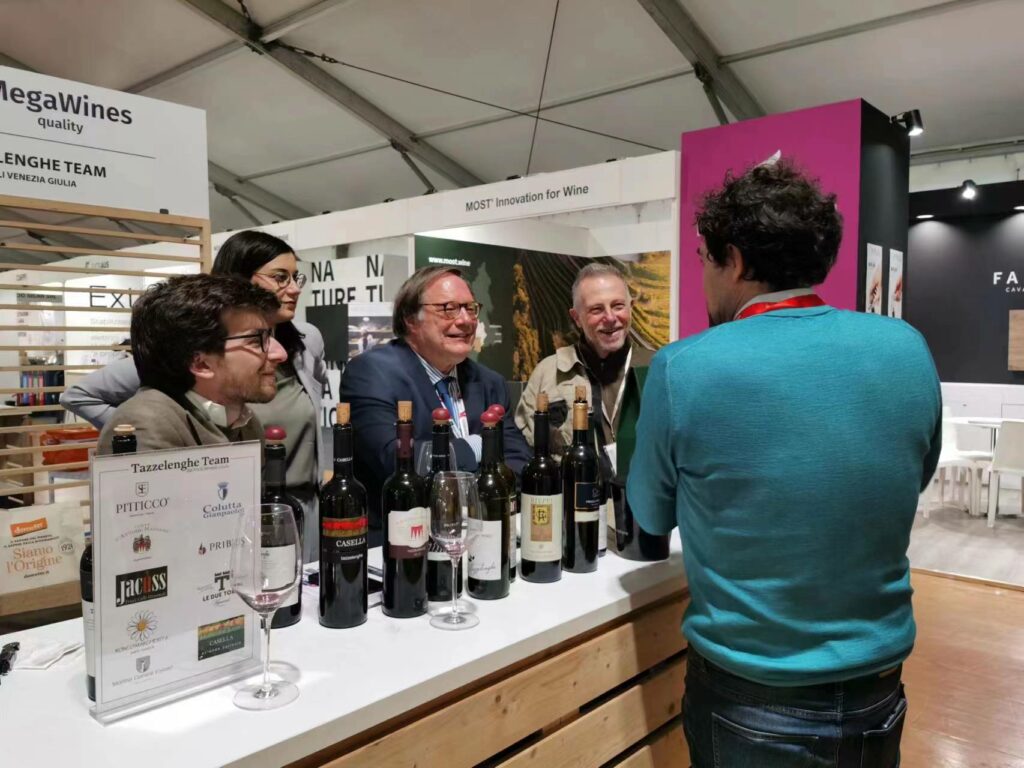
Casella.
Casella 2016 Tazzelenghe Friuli Colli Orientali 90
Deep ruby-red. Clean, precise aromas of pomegranate, blueberry, and delicately aromatic herbs on the simple but inviting nose. Then surprisingly ripe and almost sweet in the mouth, with flavours of red tomato paste that complicate the blueberry, dark plum and cocoa flavours. Closes long and straightforward, with a superripe quality. Unless I’m mistaken, the 2016 was aged 36 months in small oak barrels (the 2015 only for twenty-four months). As this is made with grapes culled in the cooler Dolegna area, I found the wine’s ripeness level to be a little atypical of the terroir, but I liked this wine’s easygoing personality and delivery of flavours. Drinking window: 2023-2026.
Conte d’Attimis Maniago
Conte d’Attimis Maniago 2016 Tazzelenghe Friuli Colli Orientali 93+
Fairly deep ruby-red. Enticing aromas of red and dark berries, tobacco, and minerals plus hints of caramel oak but nicely framed by a sexy violet nuance. Enters austere and tannic, then more supple in the middle, closing with nicely lingering, precise, flavours similar to the aromas. Conveys terrific mid-palate energy, but this comparatively backward wine also offers a thrilling light touch while hinting at future enticing development. The aftertaste is very long and subtle, with a broad dusting of fine tannins. A little vanilla is still in evidence here as this spent about 25 months in barriques (10% new). Drinking window: 2026-2035.
Gianpaolo Colutta.
Gianpaolo Colutta 2019 Tazzelenghe Friuli Colli Orientali 94
Good full vivid red-ruby. Knockout aromas of raspberry, black cherry and violet, complicated by a delicate dusting of crushed rocks and espresso. Densely packed yet weightless, offering terrific inner-mouth perfume and energy to the tangy flavours of dark cherry, raspberry, blackberry, minerals and flowers. Wonderfully penetrating and high-pitched, with a firm but noble spine of tannins and harmonious acidity. This well-balanced wine ought to age effortlessly in a good cellar. Made in an elegant style, this is abeautiful red wine that eschews the “blockbuster of the month” caricature that are many of today’s reds. Drinking window: 2023-2032.
Jacuss.
Jacuss 2018 Tazzelenghe Friuli Colli Orientali 91
Bright medium ruby-red. Aromas of dark cherry and blackberry are complicated by smoke, earth and sassafras. Good, slightly spicy, red wine with solid energy to its flavours of dark cherry, spices, green pepper, earth and graphite. Refined and only moderately fleshy but very clean and long on the finish which features repeating, notes of chlorophyll and mint. I normally score the Tazzelenghe wine from Jacuss 94 or 95 points in almost every vintage, but tehre was no getting around the slightly tough 2018 growing season (generally better for white grapes than reds). Jacuss is a real master of this grape variety, but I find this 2018 to be just a little too herbaceous and green-tinged compared to the best vintages of this wine. Those who don’t mind a little green streak in their wines, finding that it actually lifts the wine and makes t more elegant, will like this more than I. Drinking window: 2025-2032.
Le Due Torri.
Le Due Torri 2016 Tazzelenghe Tre Venezie 90
Good full red-ruby. Expressive, musky and very peppery aromas of dark berries, minerals and underbrush. Then a bit reduced, but with well-integrated acidity giving shape to the wine’s slightly austere but fresh flavours of dark berries, coffee and herbs, complicated by more cracked black pepper. Most impressive today on the tangy, fine-grained finish, which displays sneaky length, but I find this wine;s pepperiness not to be so typical of Tazzelenghe and its wines, but maybe it’s just me. This pretty wine might benefit from a few more years of patience in a good cellar to develop more nuances. It spent 36 months in oak but delivers lots of fruit and spice flavour at only 13.5 % alcohol. Drinking window: 2025-2030.
Marina Danieli.
Marina Danieli 2018 Tazzelenghe Trevenezie 92
Bright red-ruby. Clean, fresh and an obvious absence of oak on the lovely nose and in the mouth, boasting pure, pretty red cherry, cranberry and a smattering of herb aromas and flavours. Very light on its feet but also very flavourful on the persistent, clean, mineral-accented finish. Lots of flavour and only 12.5% in alcohol, made in the warmer area of the Buttrio township. Drinking window: 2023-2028.
Ronco Margherita Rieppi.
Ronco Margherita Rieppi 2019 Tazzelenghe Friuli Colli Orientali 90
Medium red-ruby. Expressive aromas of strawberry, earth and sandalwood are initially very ripe, then become more nuanced with aeration, lifted by a subtle floral element. Broad and silky on the palate, with good energy to the clean, fresh red and black fruit and smoky herb flavours. Closes with substantial but fine-grained tannins and excellent length. An easygoing, nicely approachable Tazzelenghe wine that offers plenty of flavour and only 13.5% alcohol. Drinking window: 2023-2027.
Piticco.
Piticco 2020 Tazzelenghe Serika Friuli Colli Orientali 90
Moderately saturated medium ruby. Almost liqueur-like ripeness to the aromas of cherry, exotic spices and botanicals. Fat and rich, with an impression of elevated alcohol and a strong flavour of cinnamon-laced blueberry jam and dark cherries. Finishes with a slightly high touch of alcohol and noteworthy tannic heft. Better on the evry perfumed, almost aromatic nose today than the less interesting slightly oaky mouth (this spent two years in oak). Those who like their wines on the hefty, mouthfilling side will like this more than I: so to be fair, I will be generous in my scoring. Piticco is able to make a Tazzelenghe wine nowadays because he bought some land from the La Viarte estate in 2014 and there were Tazzelenghe vines allowing him to make about 1048 bottles of wine. I for one am very glad he is doing so and will follow his wines closely. Drinking window: 2023-2027.
Tenuta Beltrame.
Tenuta Beltrame 2017 Tazzelenghe Pribus Tre Venezie 91
Bright deep ruby-red. Expressive aromas of strawberry, green pepper and spices lifted by fresh herbs and violet. Supple, lightly spicy and nicely focused if on the light side, offering a plenty of verve to its fairly supple texture and flavours of red- and blackcurrant, strawberry and cola. Finishes with dusty tannins and nicely persistent, not to mention rather broad, notes of red and black fruits, peppery spices, and bitter herbs. These Tazzelenghe vines were planted 1994. Drinking window: 2023-2028.

 中文
中文




I had the pleasure in 2018 to taste in situ Tazzelenghe wines with Ian (memorable event) and for me, what a revelation! they are well worth the trouble of finding them, elegance and character in spades, a worthwhile addition to any serious wine lovers cellar.
R=Thanks Richard, yues I remember that time together with another thirty or so wine professionals from all over the world. our experience was the same as theirs, and it was fun to see how surprised many were,. In the end, it’s all about fostering wine knowledge and culture Cheers mon ami!
Glad you liked that moment, I remember it well with about thirty other international wine professioanls who had flown in from all over the world. Hope to do it again soon!
Ian